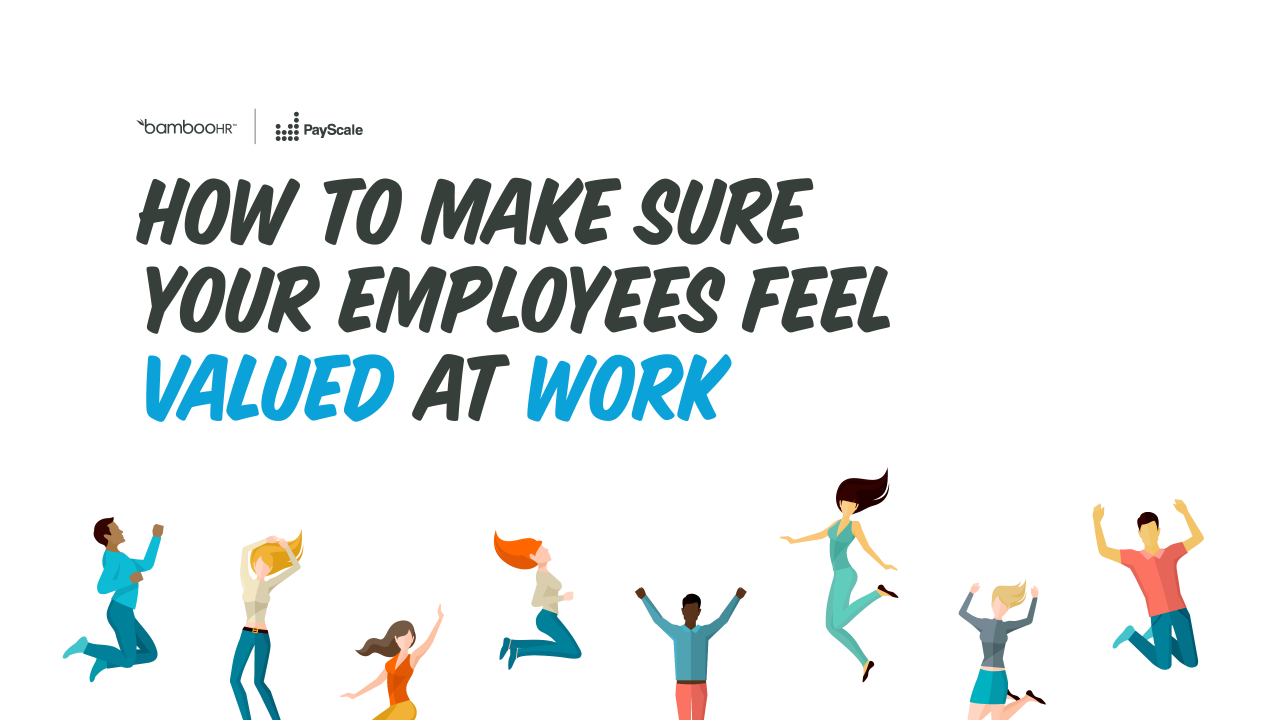In today’s competitive business landscape, an appreciated employee is a valuable asset. Recognizing and valuing employees’ contributions fosters a positive work environment, boosts productivity, and strengthens employee retention. Understanding the traits of an appreciated employee, implementing effective appreciation methods, and creating a culture of appreciation are crucial for organizations seeking to thrive.
From verbal recognition to tangible rewards, there are numerous ways to express appreciation to employees. By tailoring recognition to individual strengths and contributions, organizations can create a sense of belonging and purpose, driving employee engagement and performance.
Understanding Employee Appreciation
Employee appreciation is the act of recognizing and valuing employees for their contributions to the organization. It involves expressing gratitude and acknowledging the efforts, achievements, and dedication of employees. Employee appreciation is crucial in fostering a positive and productive work environment.
Recognizing and appreciating employees has numerous benefits, including:
- Increased employee morale and motivation
- Improved job satisfaction and engagement
- Enhanced productivity and performance
- Reduced turnover and absenteeism
- Strengthened employer-employee relationships
Forms of Employee Appreciation
There are various ways to show employee appreciation, including:
- Verbal recognition and praise
- Written thank-you notes or emails
- Small gifts or tokens of appreciation
- Public recognition at company events or meetings
- Monetary rewards or bonuses
- Flexible work arrangements or paid time off
- Opportunities for professional development or training
Effective Employee Appreciation Programs
To be effective, employee appreciation programs should be:
- Regular and consistent
- Tailored to individual employee preferences
- Specific and meaningful
- Communicated effectively to all employees
- Tied to performance and results
Identifying Traits of an Appreciated Employee
Appreciation is a powerful motivator that can make employees feel valued, respected, and engaged. When employees feel appreciated, they are more likely to be productive, loyal, and go the extra mile. There are many different ways to show appreciation to employees, but some of the most effective include:
Key Characteristics of an Appreciated Employee
Some key characteristics of an appreciated employee include:
- Reliability:They are always on time, meet deadlines, and can be counted on to get the job done.
- Hardworking:They are willing to put in the extra effort and go the extra mile.
- Team player:They are cooperative and supportive of their colleagues.
- Positive attitude:They are always upbeat and enthusiastic, even when things are tough.
- Problem solver:They are able to identify and solve problems quickly and efficiently.
Examples of Appreciative Behaviors
Some examples of behaviors that demonstrate appreciation include:
- Saying thank you:A simple thank you can go a long way in showing appreciation.
- Giving recognition:Publicly recognizing employees for their accomplishments is a great way to show them that their work is valued.
- Providing opportunities for growth:Giving employees opportunities to learn and develop is a great way to show that you are invested in their future.
- Creating a positive work environment:A positive work environment can make a big difference in employee morale and productivity.
Methods of Employee Appreciation
Acknowledging and appreciating employees’ contributions is essential for fostering a positive work environment and boosting employee morale. Various methods can be employed to express appreciation, each with its effectiveness depending on the individual and organizational culture.
Verbal Recognition
Verbal recognition is a simple yet powerful way to show appreciation. A genuine “thank you” or a specific compliment can go a long way in making employees feel valued. Public recognition during meetings or team gatherings can further amplify the impact.
Written Acknowledgements
Written acknowledgements, such as thank-you notes, emails, or formal letters of appreciation, provide a tangible record of recognition. They can be particularly effective for employees who appreciate more formal gestures of appreciation.
Tangible Rewards
Tangible rewards, such as gift cards, bonuses, or small gifts, can be a tangible way to show appreciation. However, it’s important to consider the appropriateness of the reward and ensure it aligns with the employee’s preferences and the company’s budget.
Personalized Recognition
Tailoring recognition to the individual’s preferences can make it more meaningful. For example, offering flexible work hours to an employee who values work-life balance or providing opportunities for professional development to an ambitious employee can be highly appreciated.
Regular Feedback and Goal Setting
Regular feedback and goal setting provide employees with clear expectations and opportunities for growth. When employees feel supported and guided, they are more likely to feel valued and motivated to perform at their best.
Creating an Appreciation Culture
Fostering a culture of appreciation in the workplace is crucial for employee satisfaction, productivity, and overall organizational success. When employees feel valued and recognized for their contributions, they are more likely to be engaged, motivated, and loyal to the company.
Creating a positive and supportive work environment where appreciation is a core value requires a multifaceted approach. Here are some best practices to consider:
Formal Recognition Programs
- Establish clear criteria for recognizing employee achievements and contributions.
- Offer a variety of recognition options, such as monetary rewards, public acknowledgements, or special privileges.
- Ensure that the recognition process is fair, transparent, and timely.
Informal Recognition
- Encourage managers and colleagues to express appreciation regularly through verbal praise, written notes, or small gestures.
- Create opportunities for employees to share their accomplishments and receive feedback from others.
- Recognize both individual and team contributions to foster a sense of collaboration and support.
Leadership Commitment
- Senior leaders must actively demonstrate their appreciation for employees by setting a positive example.
- Leaders should make time to connect with employees, listen to their concerns, and show their support.
- Leadership should create a culture where appreciation is embedded in all aspects of the organization.
Communication and Feedback
- Communicate the importance of appreciation to all employees and explain how it contributes to the organization’s success.
- Gather feedback from employees to identify areas where appreciation can be improved.
- Regularly evaluate the effectiveness of the appreciation culture and make adjustments as needed.
Impact of Appreciation on Employee Performance
Employee appreciation plays a pivotal role in driving organizational success. By fostering a culture of recognition and gratitude, companies can reap significant benefits in terms of enhanced productivity, morale, engagement, and retention.
An appreciated employee is one who goes above and beyond to get the job done. They are always willing to help out their coworkers and are always looking for ways to improve the company. If you are an appreciated employee, you may be wondering how to calculate your gross salary.
Luckily, there is an algorithm that can help you do just that. This algorithm takes into account your hourly wage, overtime pay, and other benefits to give you an accurate estimate of your gross salary. Knowing your gross salary can help you budget your finances and plan for the future.
As an appreciated employee, you deserve to be compensated fairly for your hard work.
Studies have consistently shown a strong correlation between employee appreciation and increased productivity. When employees feel valued and recognized for their contributions, they are more likely to go the extra mile and exceed expectations. Appreciation boosts their motivation, leading to improved performance and higher levels of output.
Boosting Morale and Engagement
Appreciation can also have a profound impact on employee morale and engagement. When employees feel appreciated, they are more likely to be satisfied with their work and committed to the organization. This sense of belonging and purpose fosters a positive work environment, where employees are motivated to contribute and collaborate.
Enhancing Retention
Appreciation can also be a key factor in employee retention. When employees feel valued and appreciated, they are less likely to seek opportunities elsewhere. A culture of recognition and gratitude creates a sense of loyalty and commitment, reducing turnover rates and saving the company valuable time and resources.
Recognizing Employee Contributions

Acknowledging specific contributions and achievements is crucial for employee morale and motivation. It fosters a sense of value and recognition, encouraging employees to continue performing at their best.
Tailoring recognition to individual strengths is equally important. By recognizing employees for their unique skills and contributions, organizations can create a personalized and meaningful appreciation experience.
Yo, if you’re an appreciated employee, you’re like the MVP of the office. But if you start messing around, don’t be surprised if you get a warning letter . That’s like a time-out for grown-ups. So keep it real and stay on the straight and narrow, and you’ll be back to being the golden boy or girl in no time.
Examples of Tailored Recognition
- Public recognition:Announcing an employee’s accomplishment during team meetings or company-wide emails highlights their contribution and boosts their visibility.
- Personalized rewards:Gift cards to a favorite store or a subscription box tailored to their interests show that the organization values their preferences.
- Opportunities for growth:Assigning challenging projects or providing training opportunities based on an employee’s strengths demonstrates the organization’s belief in their potential.
Employee Appreciation Programs
Employee appreciation programs are structured initiatives designed to recognize and reward employees for their contributions, efforts, and achievements. These programs play a crucial role in fostering a positive and motivating work environment, promoting employee engagement, and driving organizational success.
To design an effective employee appreciation program, it’s essential to consider the following key elements:
Criteria for Recognition
Clearly define the criteria for employee recognition. This could include specific performance metrics, exceptional project outcomes, outstanding customer service, or contributions to the company culture.
An appreciated employee is like a superhero in the workplace. They’re always ready to save the day, and they make the boss look good. But what’s the relationship between an employee and a supervisor? Check out this article to find out.
When an employee is appreciated, they’re more likely to go the extra mile and be a team player. So if you want to have a great team, make sure to appreciate your employees.
Rewards
Offer a variety of rewards that are meaningful and valued by employees. These could include monetary rewards, such as bonuses or gift cards; non-monetary rewards, such as recognition awards or extra time off; or experiences, such as training opportunities or team-building activities.
Communication Strategies
Establish clear communication channels to ensure that employees are aware of the appreciation program and how they can be recognized. Utilize a combination of methods, such as email announcements, company newsletters, or recognition platforms, to communicate program details and highlight employee achievements.
Regularly review and adjust the employee appreciation program to ensure it remains effective and aligned with the organization’s goals and values. By implementing a well-designed appreciation program, organizations can create a culture of recognition and appreciation, fostering employee motivation and driving organizational performance.
Appreciation for an employee is often linked to their abilities . Exceptional employees consistently demonstrate a blend of hard and soft skills, making them invaluable assets to their teams. Their ability to collaborate effectively, solve problems creatively, and deliver results under pressure sets them apart.
Recognizing and fostering these abilities in employees not only enhances their performance but also contributes to the overall success of the organization.
Technology for Employee Appreciation

Technology has revolutionized the way we communicate, collaborate, and recognize achievements in the workplace. It offers a range of tools and platforms that can enhance employee appreciation efforts, making it easier to recognize and reward employees for their contributions.
Online platforms like Kudos, Bonusly, and Nectar provide a centralized hub for recognizing and rewarding employees. These platforms allow managers and peers to give shout-outs, share positive feedback, and award points or virtual badges that can be redeemed for rewards or experiences.
Real-Time Recognition
Technology enables real-time recognition, allowing managers to acknowledge and appreciate employees’ efforts immediately. Mobile apps like Motivosity and Kazoo allow employees to send quick messages of appreciation or give virtual high-fives, fostering a culture of instant recognition.
Personalized Rewards
Technology can also help personalize rewards and recognition to align with individual preferences. Platforms like Snappy and Thank You Note allow managers to create custom rewards and send personalized thank-you notes, ensuring that each employee feels valued and appreciated.
Appreciation and Employee Development
Employee appreciation plays a pivotal role in fostering professional growth and career advancement. Recognition and acknowledgment serve as catalysts for learning, skill development, and career progression.
Learning and Skill Development
Appreciation provides employees with feedback on their performance, highlighting strengths and areas for improvement. This feedback helps them identify opportunities for professional development and motivates them to enhance their skills and knowledge. Recognition encourages employees to seek out challenges and take on new responsibilities, broadening their skillset and expanding their capabilities.
Career Advancement
When employees feel valued and appreciated, they are more likely to be engaged and motivated to excel. This enhanced performance can lead to promotions, increased responsibilities, and career advancement opportunities. Recognition serves as a testament to an employee’s contributions and potential, making them more visible to management and creating pathways for their career growth.
An appreciated employee is one who goes above and beyond their job description. Like a notary who is an employee of a bank , who not only notarizes documents but also provides excellent customer service. These employees are the backbone of any organization and deserve to be recognized for their hard work and dedication.
Overcoming Barriers to Appreciation

Despite the proven benefits of employee appreciation, there are common challenges that can hinder its effective implementation. Understanding these barriers and developing strategies to address them is crucial for creating a culture of recognition.
One significant barrier is time constraints. Managers may feel overwhelmed with their workload, leaving little time for recognizing employees. To overcome this, managers can prioritize appreciation activities, such as setting aside dedicated time for feedback and recognition.
An appreciated employee is a gem that every company needs. If you’re looking to step up your game and become one of those valued team members, check out these 15 tips an employee can use to improve . From communication skills to time management, these tips will help you become an indispensable asset to your company and earn the recognition you deserve as an appreciated employee.
Addressing Unconscious Bias
Unconscious bias can also hinder appreciation efforts. Managers may unintentionally favor certain employees based on personal preferences or stereotypes. To address this, organizations can provide training on unconscious bias and encourage managers to use objective criteria when evaluating employee performance.
Overcoming Fear of Conflict, An appreciated employee
Some managers may hesitate to provide negative feedback or constructive criticism, fearing it could damage relationships with employees. However, addressing performance issues is essential for employee growth and development. Managers can overcome this barrier by approaching feedback conversations with empathy and focusing on specific behaviors rather than personal attacks.
Creating a Culture of Recognition
Building a culture of recognition requires consistent effort and support from leadership. Organizations can implement formal recognition programs, such as awards or bonuses, but informal recognition, such as verbal praise or handwritten notes, can be equally effective. Encouraging employees to recognize each other’s contributions can also foster a positive and appreciative work environment.
Measuring the Effectiveness of Appreciation
Measuring the effectiveness of employee appreciation programs is crucial to ensure they are achieving their intended goals. By evaluating the impact of appreciation initiatives, organizations can identify what works well and make necessary adjustments to maximize their effectiveness.
Metrics for Evaluation
Several metrics can be used to assess the impact of appreciation programs:
Employee satisfaction surveys
Gather feedback from employees to gauge their perception of the appreciation efforts and their impact on their morale and engagement.
Performance data
Track changes in employee performance indicators, such as productivity, quality, and customer satisfaction, to determine if appreciation initiatives have a positive influence on performance.
Turnover rates
If you’re an appreciated employee, you may be wondering if you’re actually a subcontractor. Check out am i an employee or a subcontractor to find out the difference and make sure you’re getting the benefits you deserve. Being an appreciated employee is great, but knowing your rights is even better!
Monitor employee turnover rates to see if appreciation programs contribute to increased employee retention.
Absenteeism and presenteeism
Measure absenteeism and presenteeism rates to assess the impact of appreciation on employee well-being and engagement.
Qualitative feedback
Collect qualitative feedback through focus groups, interviews, or anonymous surveys to gather in-depth insights into employees’ experiences with appreciation programs.
Ending Remarks
Fostering a culture of appreciation is not just a feel-good measure; it’s a strategic investment in the success of any organization. By valuing and recognizing employees, organizations unlock their potential, create a positive work environment, and reap the benefits of a dedicated and productive workforce.
FAQ Summary: An Appreciated Employee
What are the benefits of employee appreciation?
Increased productivity, improved employee morale, reduced turnover, enhanced employee engagement, and a stronger sense of loyalty.
How can I recognize employee contributions effectively?
Tailor recognition to individual strengths, provide specific and timely feedback, and offer a variety of recognition methods to cater to different preferences.
What are some common challenges to employee appreciation?
Lack of time, limited resources, and inconsistent recognition practices.